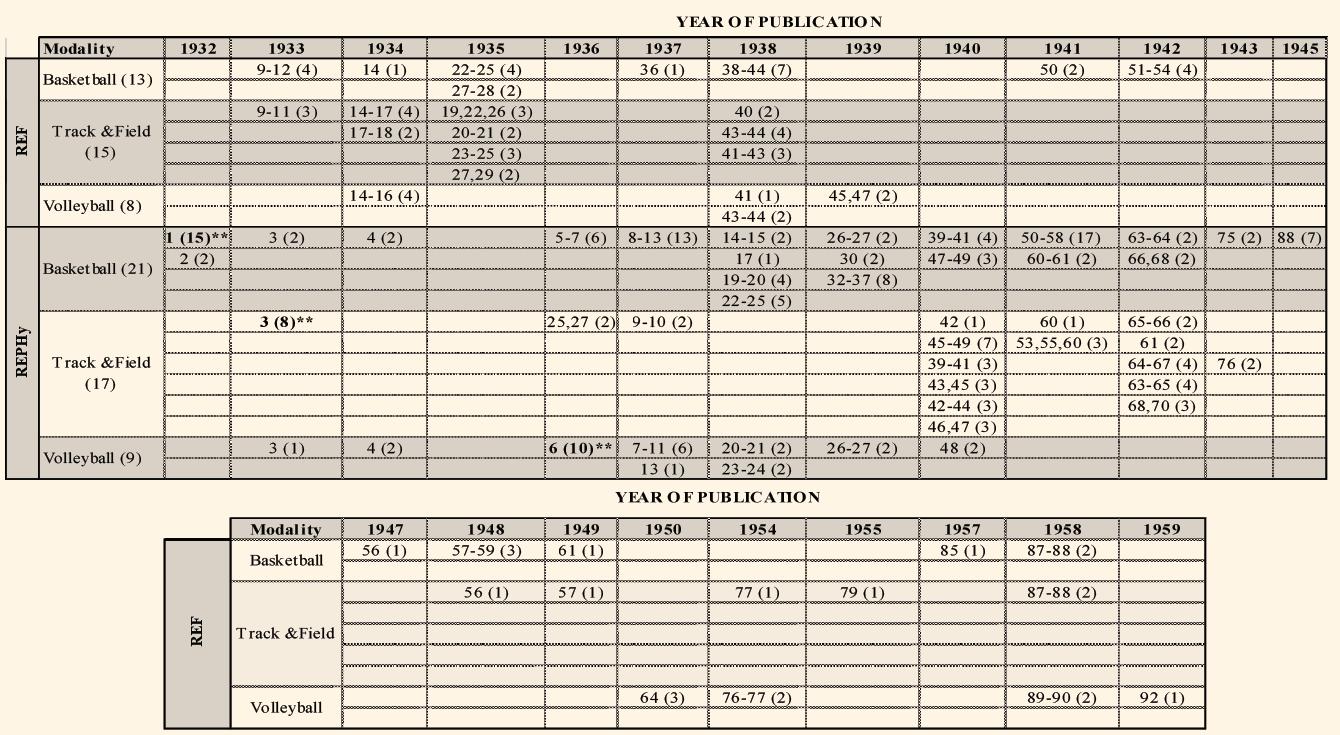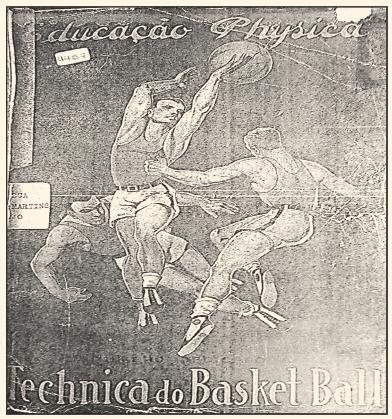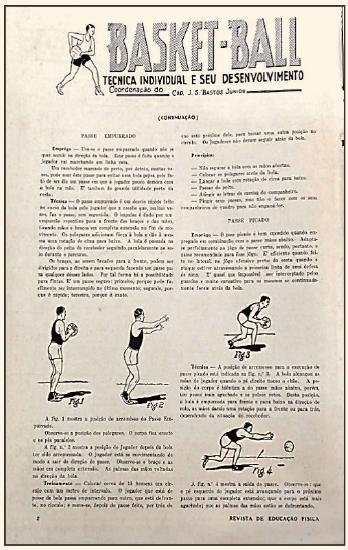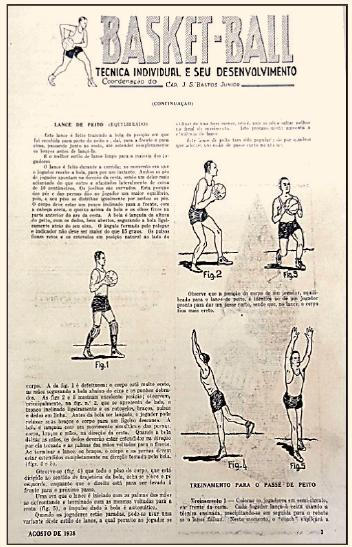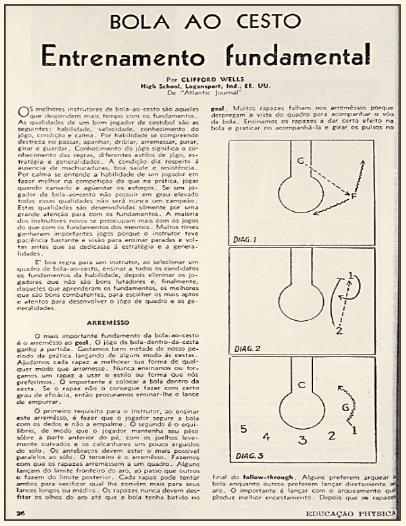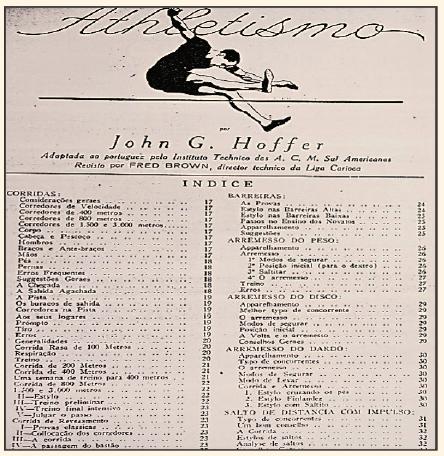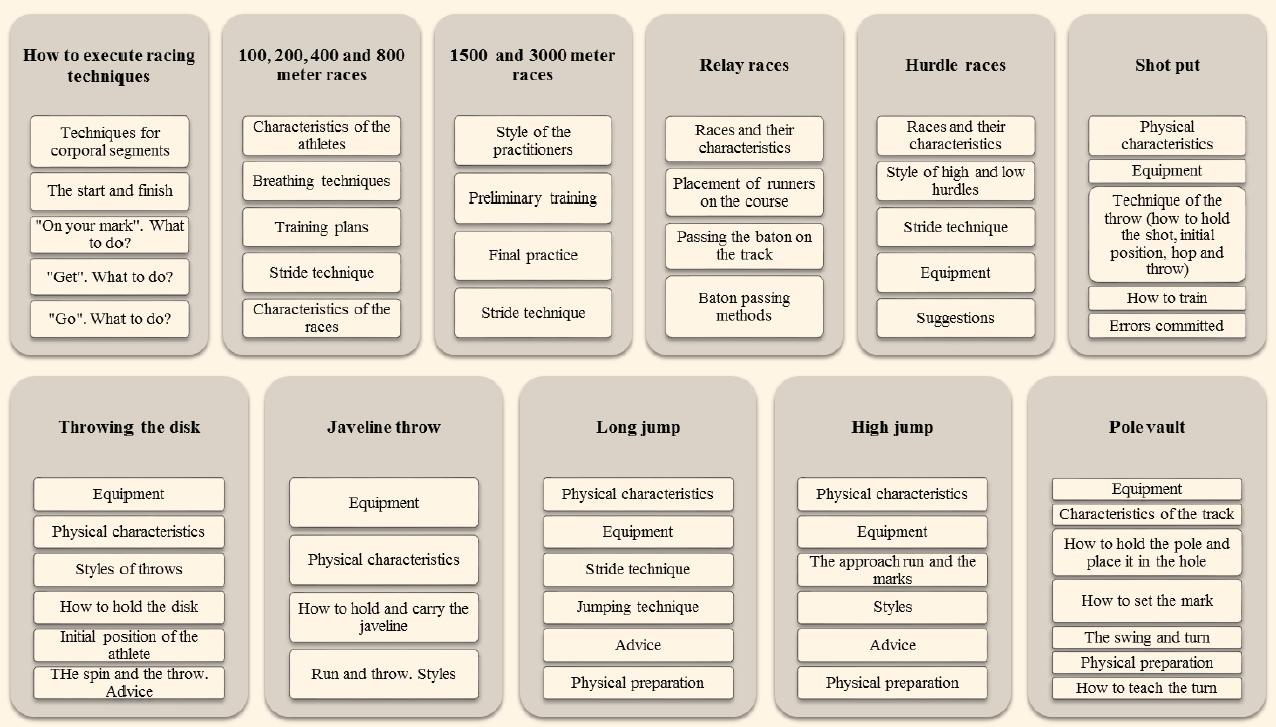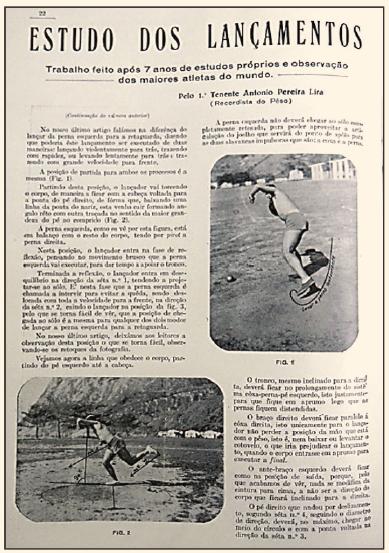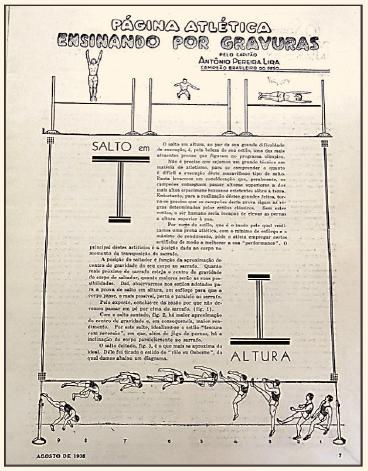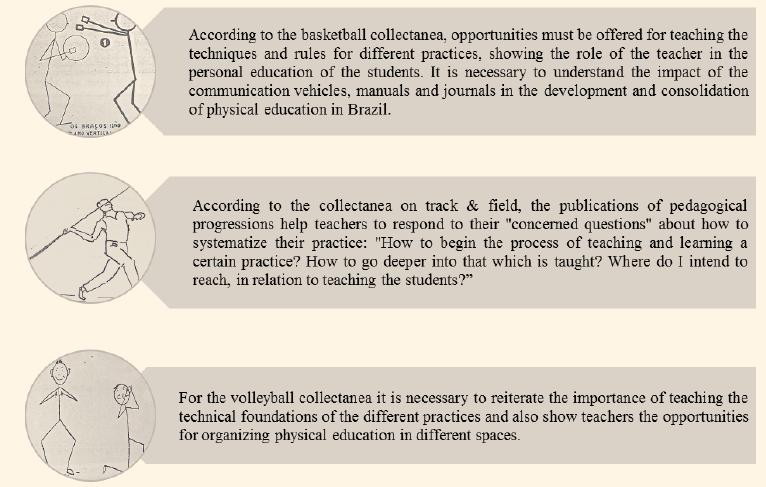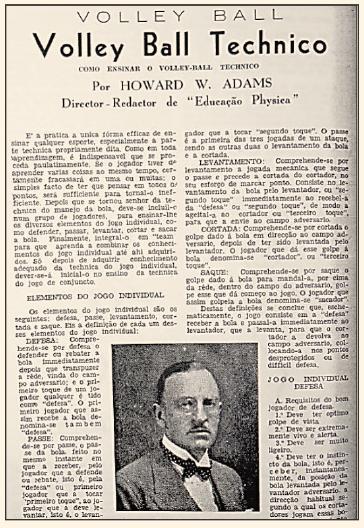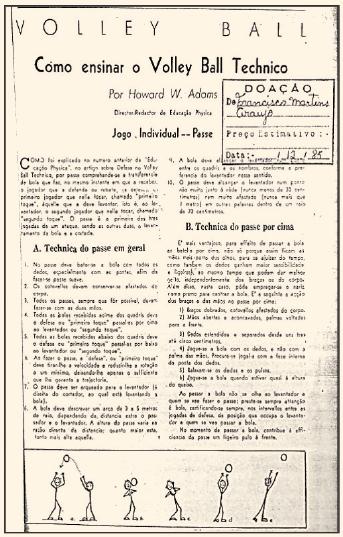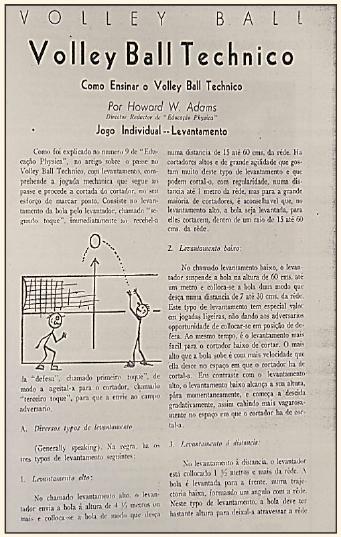The expression used in the title, coined by Fernando de Azevedo in 1922, is found in his essay about the history of sport in Brazil, published in the newspaper O Estado de S. Paulo, to commemorate the 1st centenary of the country’s independence.1 Azevedo’s analyses (1960, p. 282) showed that the practice of sport, although recent at the time, and which the author affirmed did not have a “living tradition” among Brazilians, had already produced a wise and fruitful education, inserted in physical education programs that “far from being artificial, have been adopted to reality and to social facts”.
By historically interpreting the development of physical education, Azevedo (1960) did not ignore the context in which it was found: although it was still incipient, with teachers leading exercises based on their own criteria, without so-called “scientific rigor”. After all, what should they teach? Sports, composed of emotion? Games, of joy and freedom? Or gymnastics, applied by rational and scientific analysis?
Games were considered the bases for the primary phase of physical education (for students from 6 to 14 year of age); gymnastics had the role of preparing the bodies of youths, and without which schools should not be attracted to intensive sport (AZEVEDO, 1960). Which in turn, was seen as the crown, and not the foundation of physical education - which would only be established by rationally and progressively administrated gymnastics.2 Based on Philippe Tissié, Azevedo (1960) announced the need for pedagogical practices that would articulate these exercises, since none of them in isolation would be enough to meet the conditions required of a complete physical education method.
According to Schneider et al. (2014), Góis Junior, Melo and Soares (2015) and Góis Junior (2017), these issues provided the bases for the discourses of intellectuals who promoted the need to create an ideal profile of the Brazilian people, to allow their modernization. The authors affirm that, at the time, gymnastics was defended for its methodical, rational and scientific practices, as were sports, because they would help popularize moral, physical and intellectual values needed for the complete education of individuals. These studies indicate that in the early twentieth century there were negotiations between authors and other influential civilian and military leaders about the role of sports and gymnastics as exercises that would consolidate physical education in the country.
Azevedo (1960) also emphasized the need to establish criteria for teaching sports, so that teachers would neither delay or precipitate their introduction; sports would be taught, but physical education would not be limited to sports, “which were a part of, and not the base, but [its] crowning [...] and reward, [...] [by working with] what a child had, according to his physiological moment”3 (AZEVEDO, 1960, p. 77, own translation). If sport, for Azevedo (1960), was to occupy a crowning place in the schooling of physical education, how could this be done? Wouldn’t it be necessary to offer a body of knowledge that would guide teachers about the systematization of their pedagogical practice?
To understand if these processes contributed to the insertion and consolidation of physical education in school curriculums, the objective of this article is to analyze the orientations for teaching sports published in periodicals dedicated to physical education teaching and techniques (1932-1960).4 These periodicals, where were published in the format of journals, books and posters, circulated since the 1930s in Brazil and had the objective of fighting for the development of physical education, which required professional education of teachers, specific laws and its incorporation in school programs, defining methods and practices, with an emphasis on gymnastics and sports (FERREIRA NETO, 2005; FERREIRA NETO et al., 2014).
According to Ferreira Neto (2005) and Ferreira Neto et al. (2014), these journals presented models to be imitated by physical education teachers, and served as guidebooks in which readers found orientations about activities to conduct in their classrooms. Cassani (2018), expanding this concept, indicated that, in addition to models, the editors also published theoretical bases, didactic-pedagogical guidelines in series, collectanea and teaching programs, to guide the practice and preparation of teachers, contributing to establishing physical education in schools.
SOURCES AND PROCEDURES
We used the studies of Roger Chartier (2002) about the analysis of printed material as a reference, and understand the printed materials as devices (CHARTIER, A.-M., 2002) through which knowledge, models and forms of thinking are presented for reading. We also considered the intrinsic relationship between written texts and the ways that they reach readers (CARVALHO, 2006), analyzing how the printed materials were shaped into products with editorial strategies to promote and shape pedagogical knowledge.
We recognize the reading devices (CHARTIER, R., 2002) used by editors and writers as didactic resources, which are articulated with and materialize the pedagogical norms promoted by the journals. In addition, based on the evidentiary paradigm (GINZBURG, 1989), we examine the signs, indications and details that are commonly treated secondarily, to understand approximations and distinctions between articles, giving visibility to the themes consolidated and or silenced by those who were dedicated to the publication of the didactic-pedagogical orientations.
The period of the sources examined, from 1932 to 1960, was chosen for reasons internal and external to the object of study. Considering the internal reasons, 1932 was the first year of circulation of the journals with the editorial profile discussed by Ferreira Neto (2005), Ferreira Neto et al. (2014) and Cassani (2018), which are the Revista de Educação Física [Journal of Physical Education] and Educação Physica [Physical Education]. The external motives are associated to the year of the termination of these journals dedicated to teaching and techniques, 1960, because, in keeping to their proposal, they were terminated, “failing to have found their place in the XXI century” (FERREIRA NETO, 2005, p. 776).
Based on these specificities, we use as a reference the mapping produced by Cassani (2018), from a total of 1,783 articles published in the journals: Revista de Educação Física (REF) (1932-1960), Educação Physica (REPHy) (1932-1945), Boletim de Educação Física (BEF) [Bulletin of Physical Education] (1941-1958), Revista Brasileira de Educação Física (RBEF) (1944-1952) [The Brazilian Journal of Physical Education] and Arquivos da Escola Nacional de Educação Física (AENEFD) [Archives of the National School of Physical Education] (1945-1966).
The articles were selected based on a prior reading of the titles to identify those that referred to guidelines for teaching physical education, as found in the printed version of the Catálogo de Periódicos de Educação Física e Esporte [The Catalog of Journals of Physical Education and Sport] (FERREIRA NETO et al., 2002). In this step, we did not look for specific terminology in the titles, and selected those with content related to the didactic-pedagogical guidance and orientation of teachers. However, in the process of approximation to and photographic registration of the sources, it was also necessary to read their content, article by article, to define the documents that would form the base of the research. It was also important to physically examine the printed materials to be able to select articles without identification of titles, authorship or without textual descriptions, and in this case, the choice of sources was made by the analysis of content and form.
Given the objective of this article, we decided to analyze the journals the Revista de Educação Física [Journal of Physical Education] (REF) and Educação Physica [Physical Education] REPHy. After reading all the articles in their entirety, we categorized the sources into didactic-pedagogical prescriptions and studies of concepts, used for teaching sports. From the total of 1.783 articles mapped, 334 were considered didactic-pedagogical prescriptions and 276 as studies of concepts, as seen in Table 1.
TABLE 1 DISTRIBUTION OF THE DOCUMENTS RESEARCHED
| CATEGORIES | JOURNALS | TOTAL | |
| REF | REPHY | ||
| Didatic-pedagogical prescriptions | 123 | 211 | 334 |
| Studies of concepts | 84 | 192 | 276 |
| TOTAL | 207 | 403 | 610 |
Source: Authors’ elaboration.
The category didactic-pedagogical prescriptions included articles that offered routines for planning and conducting physical education “sessions” in schools. The texts organized the objectives and methodologies, whose form was similar to lesson plans, which the periodicals entitled as physical education lessons or sessions. In these articles, we also find specific didactic procedures about teaching physical exercises, guiding teachers about the correct way to realize the corporal techniques, through designs of the human body in movement. With the assistance of images, textual descriptions and musical scores, the purpose was to show readers how to teach dance, games, play, gymnastic methods and sports.
Meanwhile, the articles placed in the category study of concepts presented technical definitions of the exercises, to prepare and guide teachers about the specificities of the exercises, before they were taught. The documents selected for analysis established a dialog with the theoretical bases of physical education, to provide a foundation to its objectives.
To organize the sources, we prepared a database on Microsoft Excel for each journal, identifying: the year of publication, year of the journal, number; page of the article; section of the table of contents/index; authors; title; and a description of the content. We then created a database for each journal with the software IBM® SPSS® Statistics - Version 22, attributing variables to this information, to conduct crossings between them.
The use of the program allowed a broad overview of the object of the study because given the high number of articles and the long period of 29 years, it was necessary to cross the data. This procedure also helped in the localization and handling of sources, supporting the understanding of their form and content.
DIDACTIC-PEDAGOGICAL PRESCRIPTIONS FOR TEACHING SPORTS TECHNIQUES
In the articles published by the journals about teaching and techniques (1932-1960), it was found that sports, understood to include a variety of modalities, accounted for the exercises with highest numeric importance (610), compared with other topics for teaching, such as gymnastics (220), games (29), dance (28) and capoeira (2).
The numeric impact of the different sport modalities in the journals was linked to how sport was seen by Brazilian society. It was understood that through the practice of sports people would develop good habits of hygiene, eating, and organization of daily life. Practicing sports would provide society a new repertoire of attitudes, new options for adaptation, instilling disciplined behavior, collective organization of movements and human intentions (SEVCENKO, 1992). By orienting Brazilians through a fixed set of rules, codes, limits and alternatives, the “sporting spirit” was incorporated to society “[magnetizing], [electrifying], [stimulating] entire collectivities, [...] [because] the practice or even the contemplation of sport would bring instant gratification to its enthusiasts”5 (SEVCENKO, 1992, p. 48, own translation).
For Linhales (2009), the schooling of sport was inserted into a cultural project that had its references in the “efficiency” of the modern school as a mechanism for the organization of social life. In this way, sport was included in the schooling processes, to contribute to “impregnating the school experience with modernizing directions and meanings”6 (LINHALES, 2009, p. 332, own translation), requiring that physical education provide guidance and create methods that would offer educational opportunities to new generations.
Based on discourses in support of sports, seen as practices that contribute to the formation of the new Brazilian society, the writers for the journals placed in circulation knowledge about different modes of sport to insert them in the process of physical education in schools. We refer to the establishment of criteria for the systematization of physical education in school curriculum, providing teachers the principles needed for this. The measures used provided diversity and a sequence to the practices, by means of which they sought to deepen that which was taught.
In this case, the writers and editors found two ways to address sports: by means of collectanea or didactic-pedagogical progressions. The collectanea sought to approximate teachers to the foundations of the modality, preparing to appropriate specific knowledge about each exercise. The collectanea combined, in a single issue of the journal, a significant quantity of articles about a single subject, associating texts categorized as studies of concepts and didactic-pedagogical prescriptions.
Meanwhile, the didactic-pedagogical progressions were constituted by articles published sequentially, over various issues of the journals, whether in consecutive issues or not. These articles presented criteria concerning that which should be taught, in a process that considered the increased complexity of practices, as well as their diversity. These progressions were presented by the authors in different forms: by indicating their continuity at the end of the articles (with expressions such as “to be continued in the next issue”) and at their beginning (“continued from the previous issue”); as long as the subject matter was the same; by the similarity of the nature of the images and in the format of the titles; and by the theme itself, even without indications that it involved a continuation of a previous article.
Of the total of 610 articles present in Table 1, 136 were characterized as collectanea and as didactic-pedagogical progressions. Organized by modality and journal, there were 49 in REF, including 15 series about track and field, 13 about basketball, 8 about volleyball, 7 football, 5 swimming and one about tennis. In REPHy there were 87, including 21 about basketball, 17 track and field, 16 football, 12 swimming, 12 tennis and nine volleyball.
For the purpose of this study, we analyzed the orientations about teaching basketball, track & field and volleyball.7 Chart 1 organizes the articles referring to these sports, according to the journals in which they appeared, their years of publication and the issues in which they were placed in circulation.
In Chart 1, the sports were organized by journal, in decreasing order. Next to each modality appears, between parentheses, the total number of didactic-pedagogical progressions mapped. The columns referring to the years indicate the number of the issue of the periodical and the quantity of articles mapped in it. The asterisks and bold type identify the collectanea or collections published by the writers, including: teaching basketball (15 articles, n. 1); volleyball (10, n. 6); and track & field (8, n. 3).8
To analyze the sources referring to basketball, track & field and volleyball, we considered, by modality, the collectanea and then the didactic-pedagogical progressions. Specifically, the promotion of basketball as a practice to be taught in Brazil was strongly represented in REPHy in which, of the 30 articles published in its first issue, 23 referred to this sport. Of these, 15 were orientations for the practice of the teachers, as shown in Chart 2.9
Chart 2 presents the main issues discussed in the basketball collectanea. Of the 15 articles published, 11 were selected because they had similar content and sought to guide the practices of teachers. The collectanea presented themes like the need to learn corporal techniques, rules of the game, the professional exercise of the referee, the role of teachers in organizing a basketball team and how to contribute to the personal education of the students. The articles also discussed the history of basketball, incentives by the press to its practice (by means of promotion, criticism and technical lessons) and the organization of games (REZENDE, 1932; BOSCOLI, 1932; SIMS, 1932; KEOGAN, 1932; BROWN, 1932; ALBERTO, 1932; OEST, 1932; BALL, 1932; SANTOS, 1932; PACHECO, 1932; MORAES, 1932; CHIOCCA, 1932; CARLSON, 1932; EDUCAÇÃO PHYSICA, 1932; ALLEN, 1932).
By establishing the foundations for teaching the modality, the journals showed the body of knowledge teachers needed to plan their practices. Because it was a collectanea, the articles had different forms, to generate the interest of teachers in promoting and teaching basketball, given the challenges raised by the media to make it popular in Brazil. With this objective, the writers and editors used as a strategy the circulation of articles that would offer teachers conditions to teach the techniques of the modality, and to propagate it, by organizing tournaments.
As seen in Figure 1, the cover of the first issue of REPHy provided clues that this issue included articles about basketball techniques. The presence of a collectanea, in its first issue, was a strategy to convince teachers of the importance of having in-depth knowledge about teaching physical education, in this case, about basketball. This same editorial strategy was realized to promote track & field (EDUCAÇÃO PHYSICA, 1933) and volleyball (EDUCAÇÃO PHYSICA, 1936).
The editors sought to instigate teachers about the content to be read in the first issue, announcing that, inside the journal REPHy, they would find articles that would help in the realization and systematization of their “sessions” in different spaces. By offering a significant number of articles about a single theme, in its first volume, the writers also suggested to teachers that the information would be provided in greater depth and detail in later issues. In fact, the guidelines for teaching basketball were published in 60 of the 82 issues of the journal.
The nature of the articles published in the collectanea was the same as that presented in later issues. In addition, the fact that the collectanea was published in REPHy did not mean that the teaching of the technical and tactical foundations of the modality would be present only in this journal. To the contrary, we also mapped progressions in REF, as seen in figures 2 and 3.
This progression was published in 1938, in six successive issues with similar formats (BASTOS JR., 1938a, 1938b, 1938c, 1938d, 1938e, 1938f).
The articles were characterized by orienting the practice and guiding the education of professionals who taught physical education, by means of design sequences and textual descriptions, whose objective was to allow readers to study the technical and tactical foundations of the modality. With each issue published, Bastos Junior addressed a specific fundament of basketball and the entire progression was concerned with showing teachers how to execute the movements.
The use of designs and photographs as reading devices that help to construct the didactic-pedagogical guidelines was also discussed by Biccas (2008), in an analysis of the Revista de Ensino of Minas Gerais (1925-1940). Biccas affirms that the use of images sought to methodologically guide teachers in the realization of activities and exercises proposed, serving as a strategy to attract readers and promote a more dynamic and pleasant reading. The image, in this case, is understood
[…] as a material [device], that goes beyond non-verbal texts, as a fundamental part of the support itself (the journal) and its forms of composition. These two elements are quite significant in terms of the production of effects and directions in the forms of reading of the texts published in the Revista.10 (BICCAS, 2008, p. 151, own translation)
As Retz (2018) observed, the images used in the articles published in the journals on teaching and techniques are devices for the “modelization” of reading (CARVALHO, 2006), designed to assist in the preparation of physical education teachers, based on the idea of doing to learn and learning to do (FERREIRA NETO et al., 2014). That is, the teachers should also be good practitioners, so they would be able to teach the exercises. The observation of the images in articulation with the written texts would offer models for readers to appropriate the exercises corporally. In this case, the images are part of the editorial project of these journals, with the purpose of bringing physical education to schools.
The use of these devices signified the production of didactic-pedagogical orientations that would give physical education an essentially practical character. This finding is linked to the urgency raised by modernization that required that men be trained for action. Nevertheless, this did not involve practice for the sake of practice, without meaning, but practice intrinsically articulated to the intellect and morals of individuals. Figures 4 and 5 indicate how basketball was oriented by REPHy.
The purpose of the articles found in figures 4 and 5 was to teach options for movement on the court (WELLS, 1939; TORNEY JR., 1939). The articles simulated basic plays, by using text that explained the schemes in numbered sequences, showing how the players should move on the court, in different situations.
The analysis of the sources also indicates the diversity with which the editors organized the journals, to offer distinct form and content for professional practice in physical education. In terms of disputes over representation (CHARTIER, 1990), we note that the use of devices like the creation of sections and titles in the issues with similar photographs, designs, schematics and textual descriptions serve to distinguish editors who sought to establish themselves as a reference among those who guided and oriented the training and action of teachers. In the case of titles, the letters used in the REF are accompanied by a design of a basketball player, while in REPHy, the titles stand alone, with more formal typefaces than the other journal.
Thus, we also understand that there is, among the writers and editors of the journals, a complementarity in terms of the publication of these devices for didactic-pedagogical use, to offer the means needed for teachers to conduct physical education in schools, promoting a schooling project that was quite well delimited in terms of the teaching methodologies and thus strengthen its insertion in curriculums. That is, to become consolidated in school space, it was necessary to know not only “what was taught”, but also “how to teach” - which is expressed in different devices used by the authors and editors.
A similar form of circulating the orientations about the teaching of physical education was observed in the articles about track & field in the collectanea published in issue no. 3 of REPHy. To organize this collectanea, the editors used an index, which was presented on two inside pages, before the articles published in the collectanea.
As seen in Figure 6, found on page 15 of the journal, the editors used a reading device that showed the contents of the collectanea - a tool not used in any of the other collectanea mapped. In this internal table of contents, the main themes refer to track competitions and the subtopics included the topics to be addressed, all with indications of page numbers. This is the case of the hurdles races, which discussed high and low hurdles; steps for teaching new athletes; equipment and suggestions.
The presence of this tool indicates the use of the table of contents to guide the reading by teachers, improving the use of the journal. While in the first pages of the journal the purpose of the table of contents was to show readers the contents considered to be “important” to their training, the presence of the other index, inside the magazine, helped even more to steer their look to the group of articles announced on the cover. The analysis of the sources suggests the editors’ intention to have readers seek out the subject matter highlighted in the journal, in this case, track & field. Upon reaching the page indicated, readers would find the properly numbered topics, thus locating their subject of interest.
Upon analyzing the general index for the articles, which REPHy published since 1938, Schneider (2010) affirmed that this mode of organization of the issues functioned as a device for regulating reading, uniformizing the way that the journal would be used. It also established a control strategy, both in relation to the articles to be read and the order in which they would be presented. To give greater coherence to that which was published, the editors offered readers a script, by means of which they could locate the issues they were interested in. These resources were also used to have the journal provide a repertoire “to which one could have access, in an ordered manner to knowledge arranged by topic”11 (SCHNEIDER, 2010, p. 115, own translation).
For the journal to assist the practice of teachers, offering them didactic-pedagogical opportunities, the editorial staff needed to create means that would facilitate the use of the journals by the teachers. These journals sought, through textual and visual language, to provide teachers clarifications about the exercises to be taught in schools, presenting itself as a manual, a guide that could be easily used in daily work to orient professional practice, which could be rapidly read, experimented with and learned at any moment of doubt - both in the preparation and realization of classes. For this reason, two tables of contents were published, to stimulate interest in the theme among teachers, guide their reading and provide them the information they needed, in an agile and clarifying manner. We organized Chart 3 to discuss the issues addressed in the collectanea about track & field.
Chart 3 was prepared according to the subjects presented in the collectanea. It was composed of only one article, however, to present the specificities of the technical details of the modality, we decided to use the nine texts about the track competitions as specific references (HOFFER, 1936a, 1936b, 1936c, 1936d, 1936e, 1936f, 1936g, 1936h, 1936i). Based on this methodological choice, all the topics presented in the chart consider the characteristics of track & field.
The organization used by the editors and writers to publish the topics in the collectanea reveal the criteria with which track and field should be taught. Teachers should systematize their pedagogical practice, considering the specific competitions, so that their progression and deepening is in keeping with the degree of technical complexity of the competitions. It begins with sprints and long-distance races, followed by relays and hurdles considered to be more difficult, because of the insertion and exchange of objects between the members of a team. Once the running and movement techniques were acquired, the throwing competitions were taught: shot put, disk and javelin.
This progression was shown to be necessary, because if in a first moment the focus of the corporal action was racing, later the focus was on the handling of devices, requiring greater precision and strength from students, to be successful in the competitions. The articles emphasize details about the devices used, the physical characteristics of the practitioners and the correct way to execute the specific movements of the competitions.
This collectanea suggested that among the track and field competitions, those with the greatest complexity were the jumps, which for this reason were the last to be worked with by the teachers. The jumps required skills in running (considered the foundation for all learning in track & field), as well as the use of specific corporal technique in the phases of approach, take-off and landing. For all the competitions (long jump, high jump and pole vault), text was used to explain: the physical characteristics of the practitioner; stride techniques; styles of jumps; equipment; jumping techniques; and physical preparation - without the use of images.
Meanwhile in the REF, the first technical progression about track and field was based on a dialog between text and photography, and even used these devices to show teachers biomechanical aspects of human movement, as presented in figures 7 and 8.
Figures 7 and 8 refer to the articles in the didactic-pedagogical progression on track & field, which was composed of five articles, all written by First Lieutenant Antonio Pereira Lira (1933a, 1933b, 1933c, 1934a, 1934b). The similarity of the titles of the progressions on basketball and track & field, in REF allow affirming that the use of the same titles for all the articles of the progressions is a reading device, designed to characterize the continuity and deepening of the topic, along the issues. The articles signed by Lira (1933a, 1933b) were entitled “Study of the throws: a study prepared after 7 years of personal study and observation of the world’s greatest athletes”. Meanwhile, those by Bastos Junior (1938a, 1938b) were entitled “Basket-ball: técnica individual e seu desenvolvimento”, [Basketball: individual technique and its development] as seen in figures 2 and 3.
The analysis of the criticisms made by First Lieutenant Lira (1933a, 1933b) of books about track & field published in Brazil, especially those produced in Germany and the United States of America, offers clues to the disputes over who would be considered an authority in teaching sports and physical education in Brazil. The author expressed discontent, and Brazil’s need to develop its own technique, without “imitating” the other schools mentioned. For Lira (1933a), the articles dedicated to teaching German and U.S. styles were more concerned with theoretical issues than with teaching track & field through observation and practice.
Even in a situation in which the German and U.S. cultures were references in Brazil (SCHNEIDER et al., 2014), we understand that the challenges raised by Lira (1933a) were an effort on his part to be recognized as an authority, considering that he was a First Lieutenant in the Army and a record holder in the shotput. Contrary to his characterization of German and U.S. journals, Lira (1933a) presented “real and practical” opportunities for the work with track & field, announcing methodologies for teaching and learning throws, materialized in specific lessons for the modality.
Lira (1933a) indicated, in this case, the need for teachers educated in physical education “to study their own experiences”, because, through observation and exploration of the technical elements, they could corporally appropriate the objects of teaching, to systematize their pedagogical practice. With these actions, he sought to become an authority in the field and in the editorial market in physical education, given that his criticisms were aimed at work produced in countries considered to be references, such as Germany and the United States.
In this didactic-pedagogical progression, all the articles of the collectanea demonstrated, through textual descriptions and photographs, the “correct” way to realize exercises, incorporating tools of biomechanics to their explanations, as shown in figures 9 to 11.
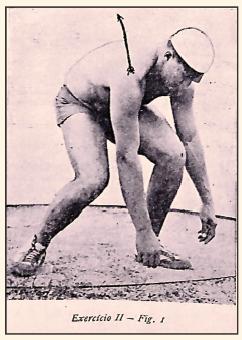
Caption: “The thrower drops down over the left leg, with his nose above his knees and arms around the left thigh, with the hands nearly touching the ground”.
Source: Lira (1934a, p. 35).
FIGURE 9 EXERCISE 1 OF FLEXING LEGS AND EXTENDING TRUNK
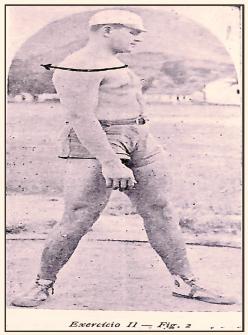
Caption: “Extended as seen above, the athlete is found in the position of this figure”.
Source: Lira (1934a, p. 35).
FIGURE 10 EXERCISE 2 OF FLEXING LEGS AND EXTENDING TRUNK
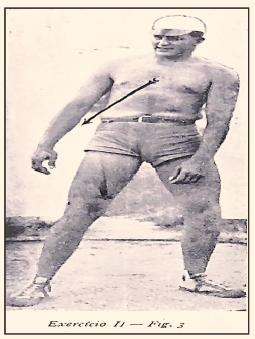
Caption: “We see that the athlete rotated his trunk, to be in the proper situation, ready to drop down over the right leg”.
Source: Lira (1934a, 1936).
FIGURA 11 EXERCISE 3 OF FLEXING LEGS AND EXTENDING TRUNK
As seen in figures 9 to 11, arrows were drawn on the photos as an iconographic resource to show teachers the proper angle for executing and teaching the movements. In the entire collection Lira (1933a, 1933b, 1933c, 1934a, 1934b) emphasized that the process of learning track & field only takes place through “practice” and for this reason, he presented different resources that facilitated the teachers’ absorption of the object of teaching of physical education. The articles had a similar form and used that which the author called “artifices”, means by which readers were encouraged to “unveil the [technical] secrets” of the modality. These artifices were based on biomechanics, and established the journals as didactic-pedagogical devices that favored the expansion of knowledge of the teachers, to prepare them to teach track & field.
Figures 12 and 13 are other didactic-pedagogical progressions prepared by Lira, offering indications of how the principles of biomechanics were appropriated by the author and provided him the bases to diversify the “real and practical” work with track & field.
Figures 12 and 13 compose a didactic-pedagogical progression of eight articles by Lira (1938a, 1938b, 1938c, 1938d), published in successive issues and with similar form and content: with the titles (“Athletic Page: teaching with sketches”). In this progression, the articles were shorter and sought in a simplified manner to present teachers different styles of high jumps, in this case, the “roll or Osborn” style (Figure 12) and the “Reverse Scissor” (Figure 13). This form of publication suggested a strategy to publish small and concise articles, which would serve as a guide - in which teachers could quickly clarify their doubts, by looking at the images in sequence and the brief textual descriptions.
We specifically note how knowledge of biomechanics was appropriated by the writers to express in a more didactic manner the processes of teaching and learning physical education. The designs used no longer appear with arrows, as seen in the progression published in 1933, but with the sequence of movement itself, in which there is an indication of the technique learned, in the different moments in which the body is in movement.
These distinctions also offer clues (GINZBURG, 1989) about the uses by the author of different fields of knowledge to create visual methodologies that make teaching physical education “more simple, real and practical”, turning the journals into didactic-pedagogical devices. We refer to the dialog of the writers with the studies of Etienne-Jules Marey and Demeny, in particular, about the use of chronophotography to support the analysis of human movement, based on the laws of mechanics.
Specifically, the placement of the photographs in both of Lira’s didactic-pedagogical progressions expresses the process with which the theories of Marey and Demeny contributed to the education of those who taught physical education in Brazil. In the first collection, we see the effort to present photos characterized by the isolated registration of the movement. For this reason, the use of the arrows facilitated teachers’ understanding of the next movements that should be executed. While in the progression published in 1938 the iconographic resources refer to the editor’s appropriations of chronophotography.
As Cassani (2018) discusses, the writers and editors appropriations of these theories contributed to having their orientations published with reading devices whose details would facilitate the teachers’ understanding about the exercises to be taught in physical education. The teaching of exercises, in this case, was based on the statute of modern science required by physical education, in which the production of “true” knowledge was based on experience and “rigorously demonstrated” facts. Similar to the fields of biology and psychology, what characterized it as science was the use of methods to demonstrate “the manner or order to follow in search of something, […] to reach the desired goal”12 (RAPOSO, 1958, p. 11, own translation). In these specific articles, the use of the method was revealed by the effort of the authors to show, in the clearest way possible, in sequence and precisely, how to teach track & field, helping teachers to understand how to correctly conduct the exercises.
Similar to what took place with basketball and track & field, volleyball was announced as the main content on the cover of REPHy. Each cover, which highlighted exercises to be taught in physical education, sought to create an interest in the collectanea that would offer new knowledge and techniques, helping the teachers to systematize their professional work. Chart 4 presents the main themes addressed in the collectanea on volleyball published in 1936 by REPHy.
Composed of ten articles, this collectanea was different than the previous ones, because it offered a body of knowledge that guided teachers in relation to the procedures that would make viable the insertion of the modality in schools, clubs, associations and communities. Aimed at teachers and all those interested in promoting the sport, the collectanea established a plan to institutionalize volleyball in Brazil, providing routes to its popularization (BROWN JÚNIOR, 1936; LAVEAGA, 1936a, 1936b; CROMIE, 1936; BENNET, 1936; ASHLES, 1936; JOHNSON, 1936; CROSSMAR, 1936a, 1936b; ROGERS, 1936).
The teaching of the technical foundations took a central place in the systematization of physical education. As found in all the collectanea, we begin with the technique of the modality, to on this basis, learn specifically about: the organization of competitions and commissions that would popularize volleyball; methods of teaching to be worked with in schools; rules and signs used by judges; specificities of the game in schools for boys and girls; use of didactic resources such as books and films to facilitate learning; and reasons that stimulate and motivate the practice of the modality.
The analysis of the collectanea reveals the process the writers used to provide opportunities for physical education to be inserted in school curriculums, and above all show that an effective consolidation of this process was also accompanied by its administrative organization in other spaces, beyond schools. We refer, in this case, to spaces of leisure and training in sports, because to the degree that different modalities became accessible and were strengthened in these places, they also became potential topics to be taught in physical education programs in schools. There are indications that a project for bringing physical education to schools was fed by the teaching of outdoor practices, in clubs, associations and communities.
The journals did not present disputes about the places in which physical education and its corporal manifestations would be taught, or even the idea that one would serve as a means for the development of the other (the school as a space to train athletes, who could act in clubs, for example). It would be through group work among professionals who acted in these different segments that physical education would be strengthened in the project of integral human education and in the school curriculum.
Based on the analysis of the collectanea, we captured and present three routes used by the editors and writers who turned the journals into devices for didactic-pedagogical use. We organize these criteria in Figure 14.
Figure 14, prepared according to the analysis of the collectanea, expresses the criteria used by the writers and editors to provide devices for didactic-pedagogical use for teachers. It also announces the elements needed for the preparation of material supports of this nature, in particular publications that address the role of teachers in the moral education of students, the objects used to teach physical education in an in-depth manner, teaching of corporal techniques articulated with their pedagogical progression and the place that physical education occupies in schools and other spaces. To understand how these issues are presented in the progressions for teaching volleyball, we present figures 15 to 18.
Figures 15 to 18 are part of a series of five articles signed by the editorial director Howard W. Adams (1936, 1937a, 1937b, 1937c, 1937d), published in issues 7 to 11 of REPHy. In this progression, the rules of the modality were taught, as well as technical foundations and training methods. For the appropriation of corporal technique, it indicated the need for teachers to turn to lessons from the previous issues, through affirmations like “the technique of ball handling when setting the ball is practically the same as that of the serve, which was explained in number 10 of ‘Educação Physica’”13 (ADAMS, 1937d, p. 51).
This reading device is an editorial formula that sought to guide teachers about the use of the journal, seeking to convince readers of the need to have references in prior knowledge, to deepen their learning processes. This also reinforces our argument that, for the editors and writers, the teaching practices should consider the knowledge produced previously, attributing complexity to it. Strategies such as these also suggest to readers the possibility of using and appropriating the journal REPHy as didactic-pedagogical support material, because they need to save and collect the previous issues to remember the contents presented in sequence.
The analysis of the articles that prescribe the practice and guide the preparation of teachers found other measures used by the editorial staff and writers to shape the material in pedagogical collections. We refer to the publication of articles that, in sequence, attribute an increasingly in-depth approach to the teaching of exercises, generating the need for the reader to collect the different volumes, to understand the didactic-pedagogical progression needed to exercise teaching.
Thus, the analysis of the articles published by Adams (1936, 1937a, 1937b, 1937c, 1937d) would announce the criteria used by writers to systematize the practice of teachers, making the journals supports for professional orientation. The interpretation of the sources indicates that to be a didactic-pedagogical device, it was necessary to have an interactive language, that would be inviting to readers’ and attract their attention. It was necessary to promote contents that would meet the expectations of those dedicated to teaching volleyball, indicating the criteria for its didactic progression, that is, first it worked with passes, and later sets and finally, spiking - the three plays considered fundamental to the attack (ADAMS, 1937b).
More broadly, the approximation between the articles of different modalities expresses a concept of human formation based on sports, in which technique, morality and physical preparation were considered interdepent. The form and content of the articles, in this case, were interlinked, offering us the foundation by means of which these journals were prepared, to guide teachers.
We refer to the didactic methods and norms for teaching sports that, according to Hollanda Loyola (193-?), constituted the base for the preparation of pedagogical principles that would grant theoretical unity to physical education. Theoretical and practical knowledge of technique was a criteria for the formation of an “efficient set” in work with sports - a combination of technical, moral and physical preparation - preparing students to develop “a harmonious set [of these] three qualities”14 (LOYOLA, 193-?, p. 69, own translation).
FINAL CONSIDERATIONS
The objective of this article was to analyze the orientations for teaching sport published in the journals dedicated to teaching and techniques (1932-1960). The analysis of the collectanea and of the didactic-pedagogical progressions shows the constitution of these journals as devices for didactic-pedagogical use, in which readers find guidance for teaching sports, which contribute to their practice and professional training in physical education. The writers and editors of these journals intentionally and imperatively affirmed that it was not possible to learn the different sports modalities, and how they should be practiced, if their technical fundaments were not at the foundation of the entire process.
We also identified how the journals offered the technical details needed to teach the practice of sports. The analysis of the sources indicated that a body of knowledge was presented as being necessary for teaching, which referred to a project of professional education. The conditions needed to “crown” physical education in schools and other spaces included the importance of study; the corporal appropriation of a modality to be able to teach students; the mediation of interpersonal relations; and knowing the rules and history of the sports practices. Without these elements, physical education would lack the depth and complexity needed for the organization of the teaching programs.
The resources used to prescribe the practices and guide the education of professionals who work in schools, as materialized in progressions and collectanea, display criteria related to repetition and sequencing in the technical teaching of exercises and the importance of pedagogical work that considers the complexity of the object of teaching physical education. The analysis of the sources published between 1932 and 1960 indicate how the principles for teaching sports, are “dear” to the scientific production of physical education today. The processes of silencing in relation to teaching technical details of sports, which arose particularly since the 1980s, have compromised its specificities as a curricular component.
If since the 1930s the place of physical education in school curriculars was consolidated through the establishment of criteria related to “the what” of teaching, we have accompanied its deconstruction, above all in relation to that which Fernando de Azevedo would understand as the “crowning” of physical education. More than defending sports education, we highlight the necessary progression of its objects of teaching that, through the inseparability between the corporal, intellectual and moral experience, consolidated sports education in schools.











 text in
text in 


